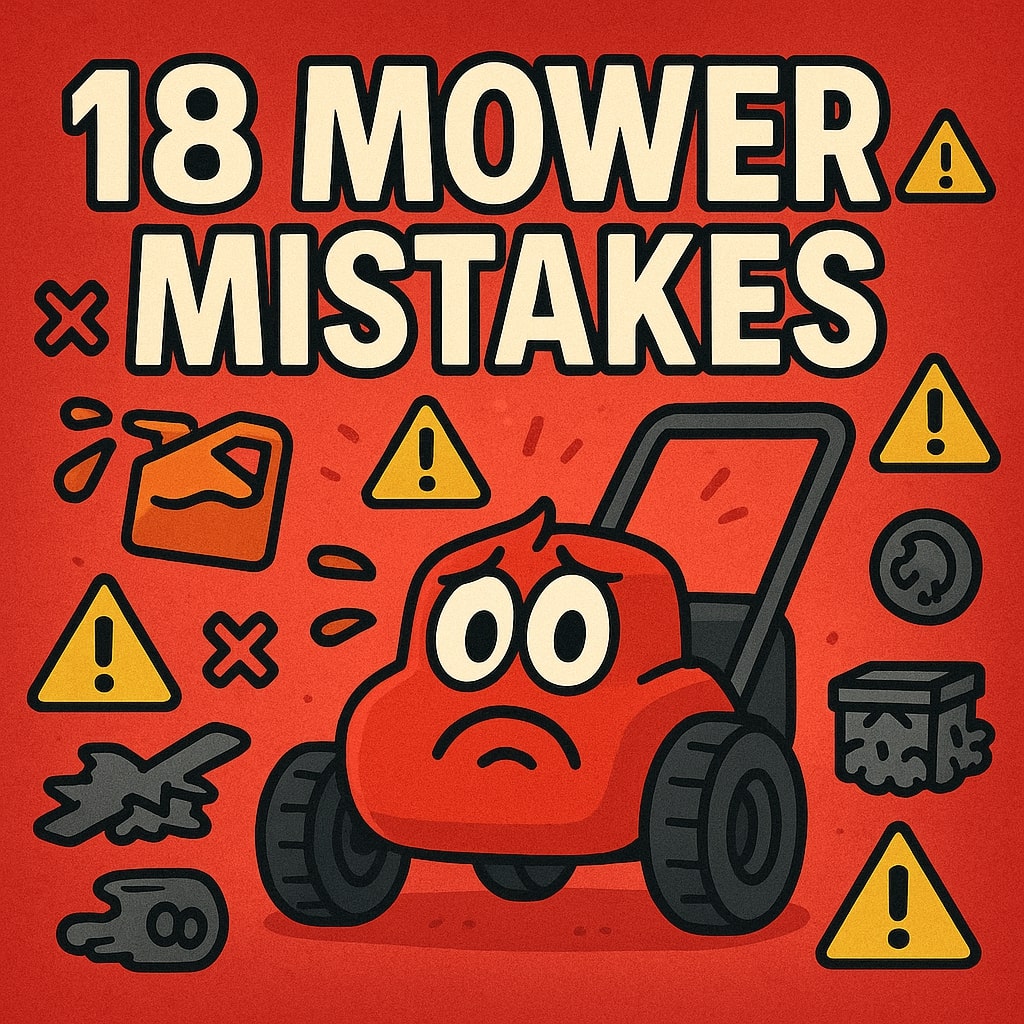
Everyone messes up mowing at some point. If you say you haven’t, you’re either lying or you just bought the mower yesterday.
Most of the time common lawn mower mistakes come from skipping the small stuff. A loose bolt here, stale gas there, and suddenly you’ve got a weekend project that could’ve been a 5-minute fix.
Quick realities:
- Most people don’t mean to destroy their blades — the rock was ‘definitely not there last week.’
- A clogged deck is basically your mower gasping for air.
- “My mower sounds tired” usually means the air filter is doing way too much.
Why it happens:
- Folks ignore little lawn mower problems until they get loud.
- They skip mower troubleshooting because they’re running late.
- People mistake a poor cut for a turf issue, when it’s actually cutting mistakes or a dull blade.
- One low tire or uneven deck = uneven lawn issues that look sloppy.
- And yeah, skipping a quick check is a mower safety risk — loose parts fly, not just annoy you.
Fast checks (do these first):
- Fast check: Look under the deck—if it’s caked with grass, scrape it. Easiest fix: putty knife, five minutes.
- Quick trick: If it rattles when you turn, check the blade bolt first.
- Most people miss this: check the air filter after a dusty job — tap the dust out and close it up.
A tiny bit of prep cuts down breakdowns, lawn mower problems, and time spent fixing stuff later. Do the quick checks, don’t overthink it, and your mower will behave like a grown-up.
18 Most Common Lawn Mower Mistakes (With Real Fixes)
1
Using Old Gas (Biggest Start-Up Killer)
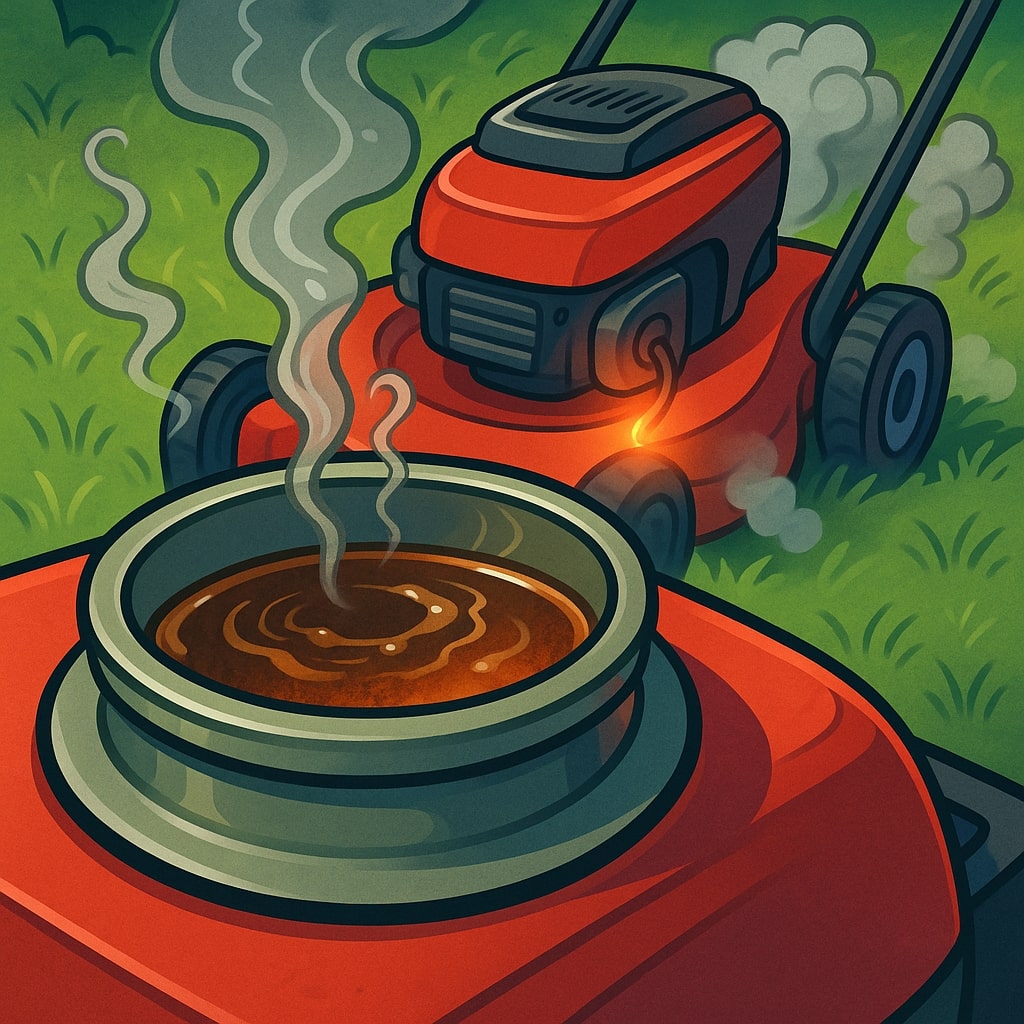
Last season’s fuel turns into stale fuel and clogs up everything. If your mower suddenly “just won’t start,” old gas is usually the villain. Dark, funky-smelling fuel belongs in the disposal can, not your tank.
Quick fix: if it smells like paint thinner or looks orange/brown, dump it and refill with fresh gas.
2
Ignoring Dull or Damaged Blades

Dull blades don’t cut grass, they tear it. That’s where the frayed, crispy, brown-tipped look comes from. A nicked or bent blade also adds vibration and stress to the deck.
Glance at the grass tips after mowing: clean = good, shredded = time to sharpen or replace.
3
Mowing Wet Grass (Clumps & Clogs)
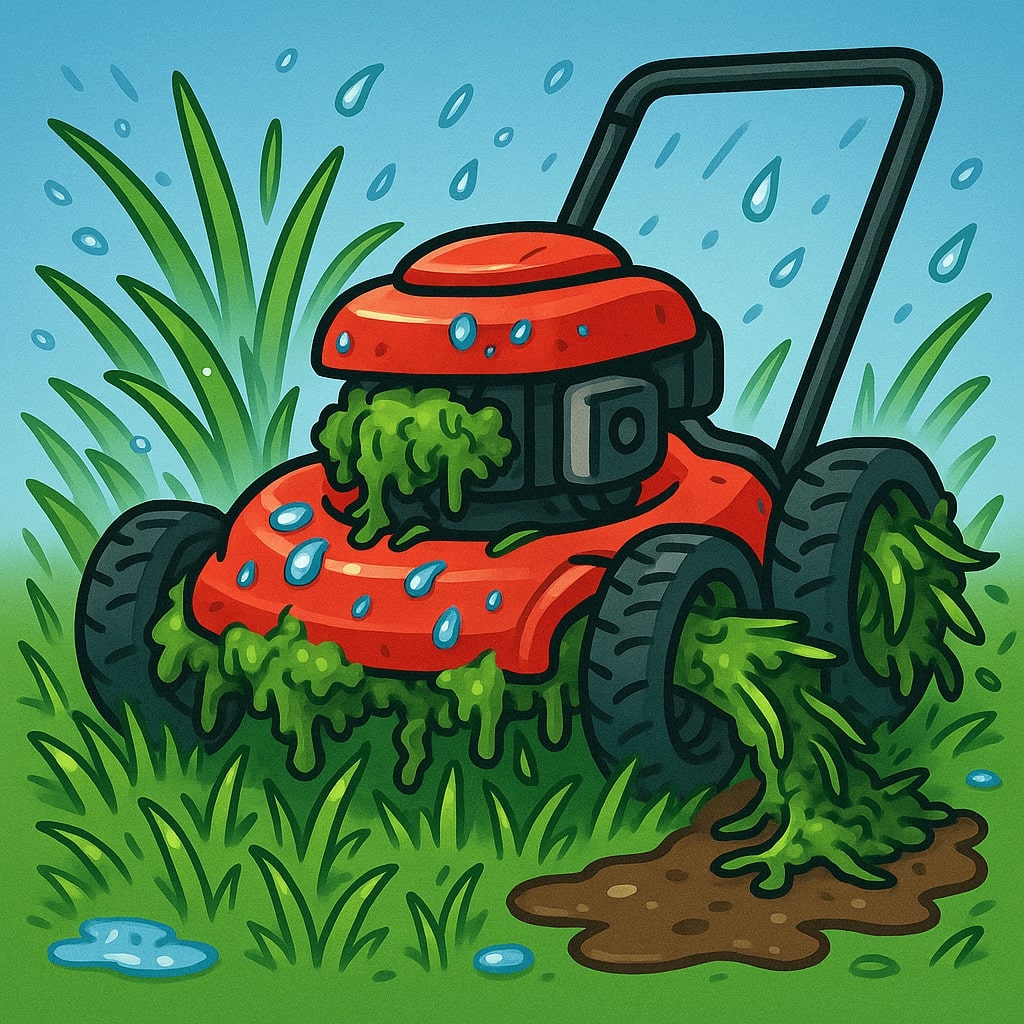
Wet grass sticks to everything, packs under the deck, clogs the chute, and turns mowing into a slip-and-slide. It’s like trying to cut wet spinach — more smearing than cutting.
If your shoes are getting wet from the lawn, your mower deck is about to turn into a mud mixer. Wait for it to dry.
4
Setting the Mower Too Low (“Scalping”)

Trying to get that “golf course low” on regular home turf usually ends in bald patches, brown spots, and a stressed, angry lawn. Scalping exposes soil and invites weeds.
Lift the deck a notch and follow the 1/3 rule: don’t remove more than one-third of the grass blade in a single cut.
5
Not Checking Tire Pressure

One soft tire drops the deck on that side and instantly ruins cut quality. You get a crooked, lopsided mow that’s super obvious from the street.
Use a cheap tire gauge and match all tires to the recommended PSI printed on the sidewall or in the manual.
6
Leaving Grass Buildup Under the Deck
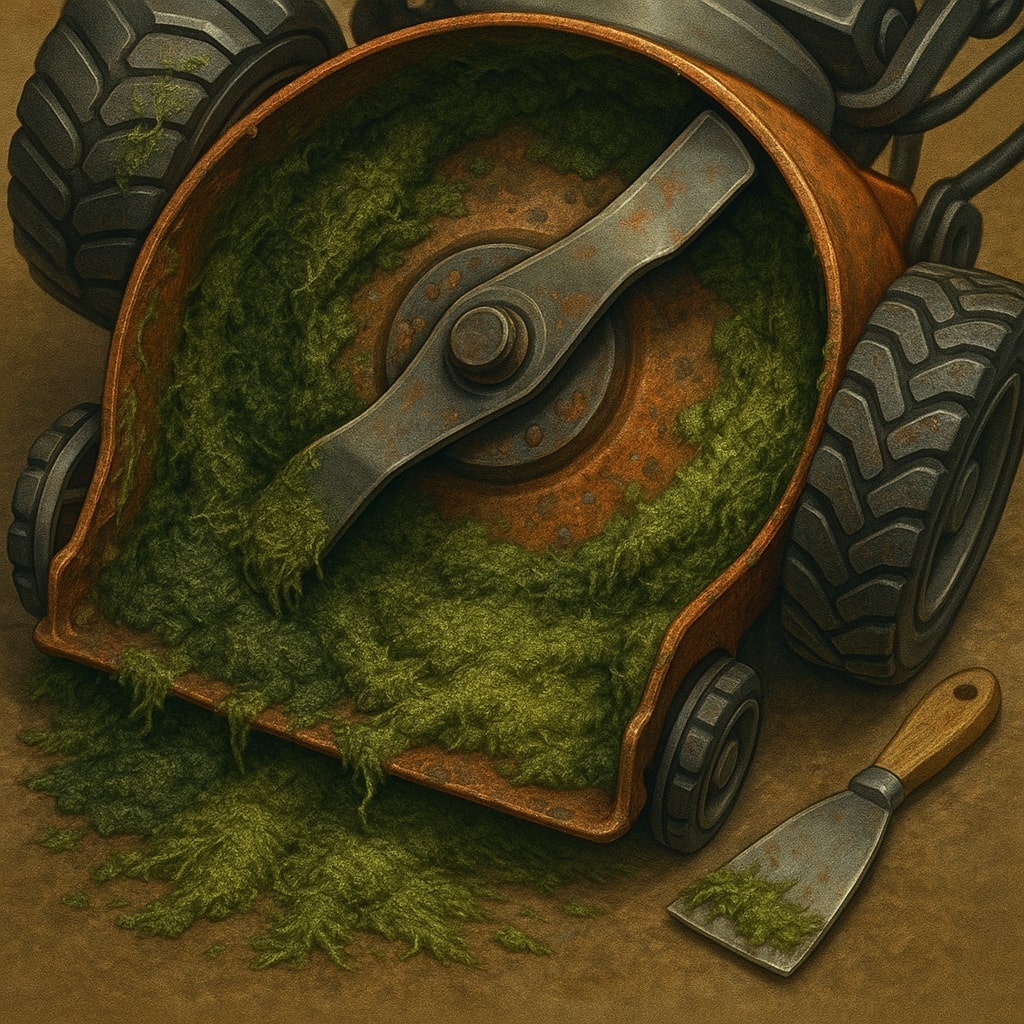
Packed grass under the deck kills airflow, causes constant clogging, and makes the mower work twice as hard. It also traps moisture and encourages rust.
Keep a putty knife or plastic scraper handy and knock it out after each mow, before it dries like concrete.
7
Forgetting to Clean or Replace the Air Filter

A choked air filter makes the mower bog, surge, and lose power, especially in dusty conditions. It’s the lawn mower version of trying to run while breathing through a sock.
Pop the cover, tap the filter, and if a cloud of dust falls out like flour, clean or replace it.
8
Skipping Oil Changes or Oil Checks
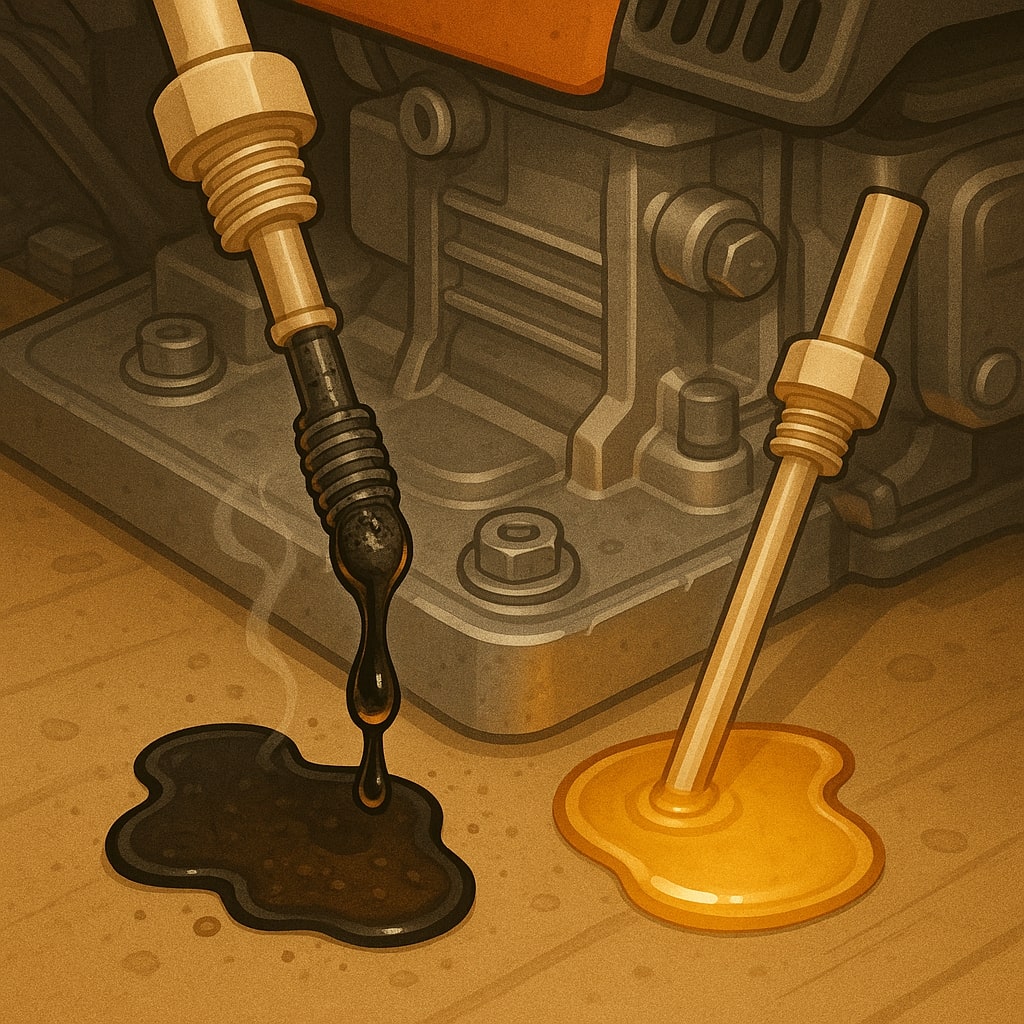
Low or dirty oil is the fastest way to kill a mower engine. If the dipstick is dry or the oil looks like black sludge, you’re in the danger zone.
Check oil before you mow, not after. Change it at least once a season or after heavy use.
9
Running the Mower With Loose Blade Bolts
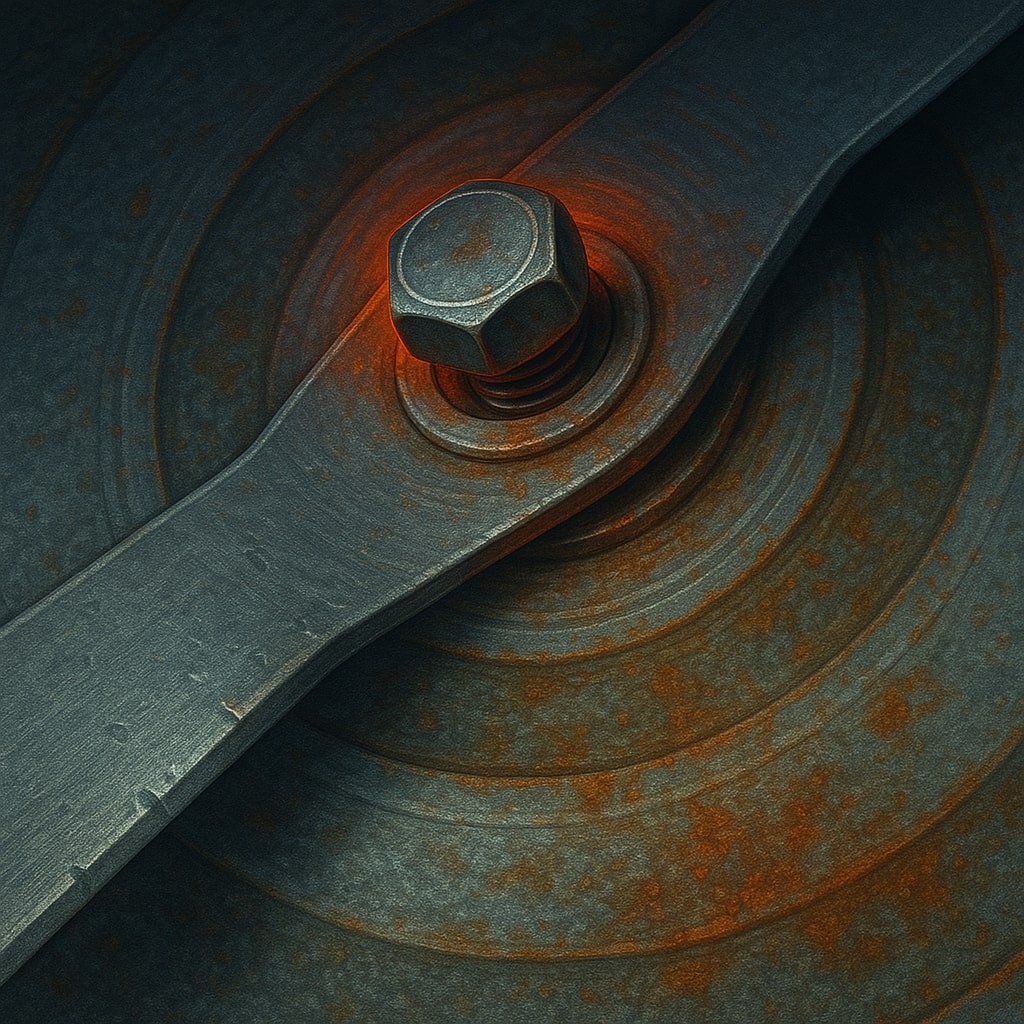
Loose blades create wild vibration and can damage the spindle or deck. It feels like you’re pushing a paint shaker instead of a mower.
If your mower suddenly vibrates more than usual, shut it down and check the blade bolts immediately.
10
Never Checking the Spark Plug

A loose or fouled plug is behind a ton of “it just won’t start” complaints. Plugs loosen over time and carbon buildup makes starting harder and harder.
Give the plug a quick check every few mows: snug it up and replace if it’s black, oily, or cracked.
11
Using the Same Mowing Pattern Every Time

Mowing in the exact same direction every week compacts the soil, crushes the same spots, and eventually creates ruts. Plus, you miss out on those clean-looking stripes.
Rotate patterns: up-down, side-side, then diagonal. Your lawn will look better and stay healthier.
12
Letting the Grass Grow Too Long Between Mows
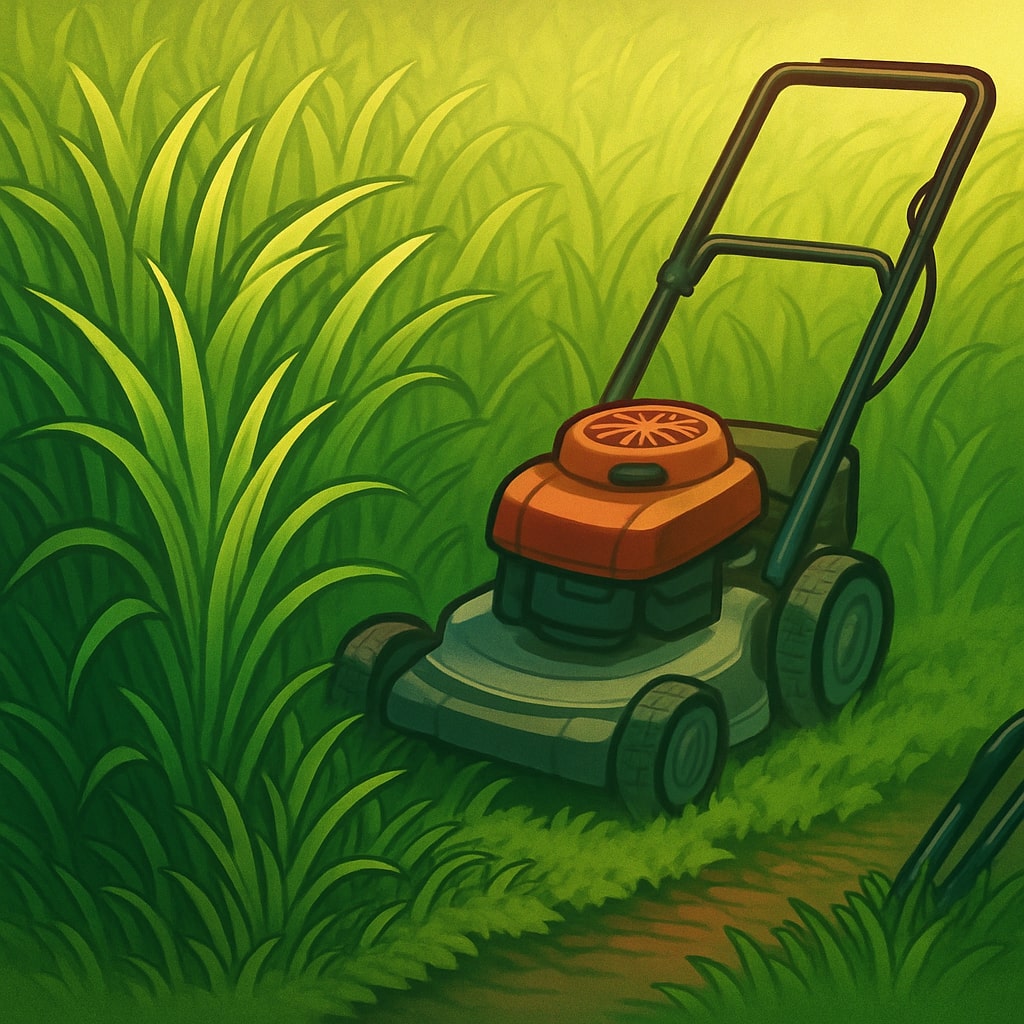
Skipping a couple of weeks turns mowing into a workout and forces you to double-cut just to get things even. Tall, heavy grass also stresses the mower and clumps badly.
Aim to mow before it hits “jungle mode” — usually once a week in peak growing season, or as needed to keep cuts manageable.
13
Mowing Too Fast
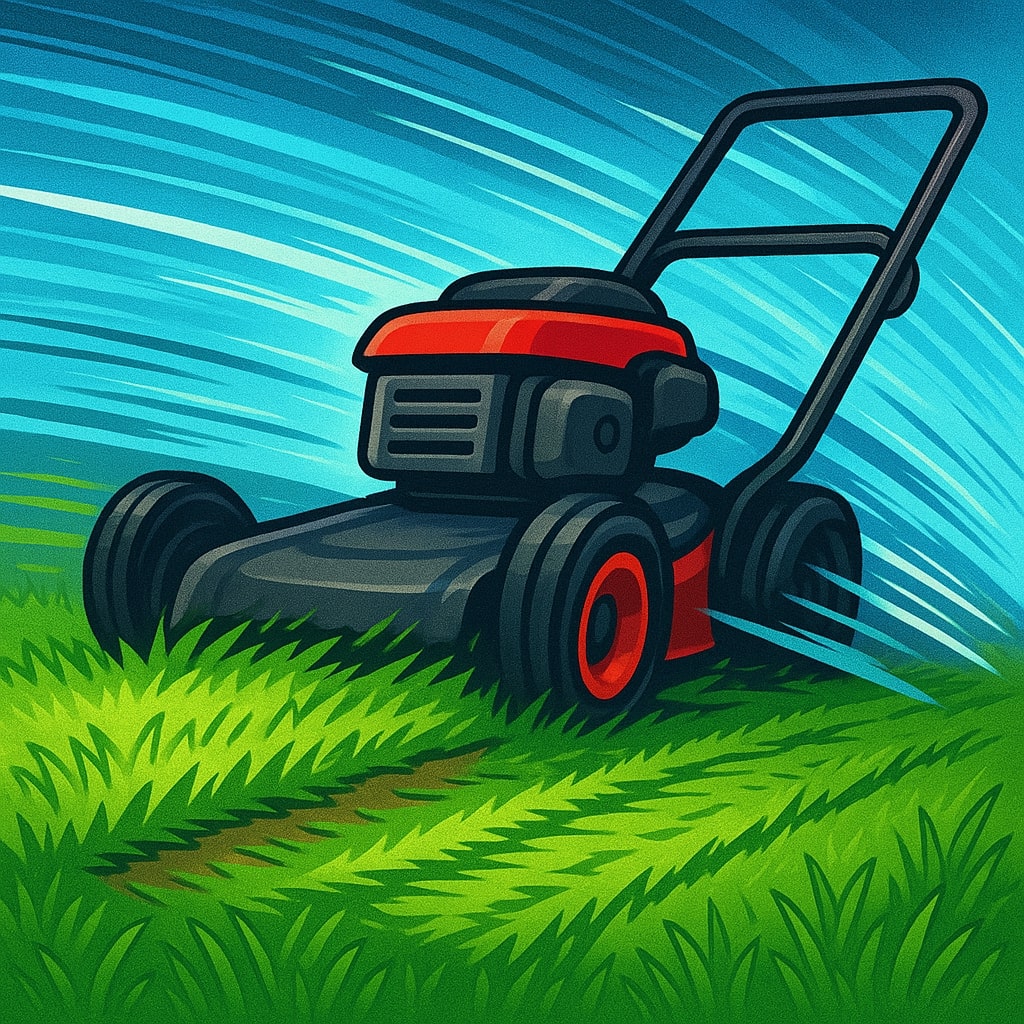
Flying across the yard leaves random uncut strips and a choppy, uneven finish. The blade needs time in each spot to actually cut cleanly.
Slow down a notch, especially in thick or tall patches. You’ll finish with fewer missed spots and less rework.
14
Not Clearing Debris Before Mowing
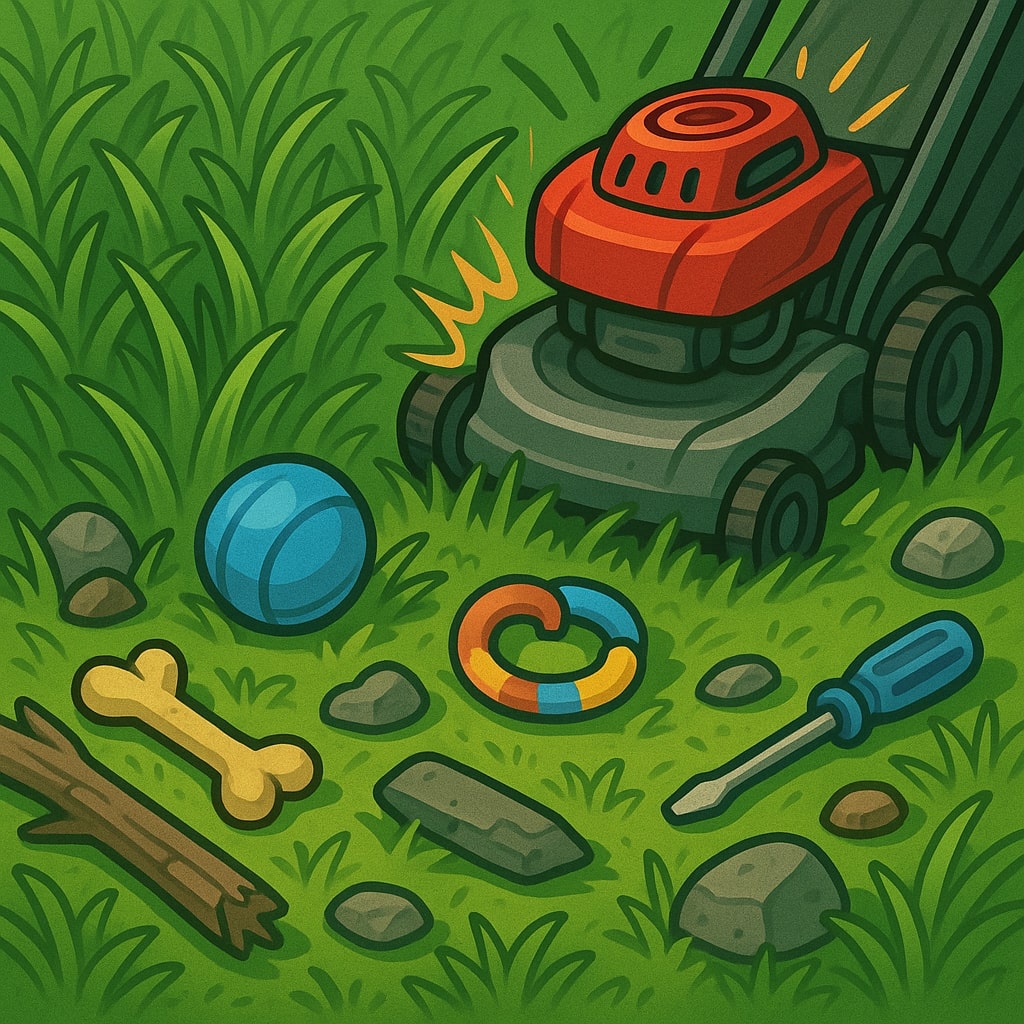
Toys, sticks, rocks, dog bones, and sprinkler heads hide in the grass just waiting to destroy blades — or launch like tiny missiles.
Take a 2-minute walk-through before you mow. It’s cheaper than replacing blades or windows.
15
Ignoring Strange Sounds or Vibrations
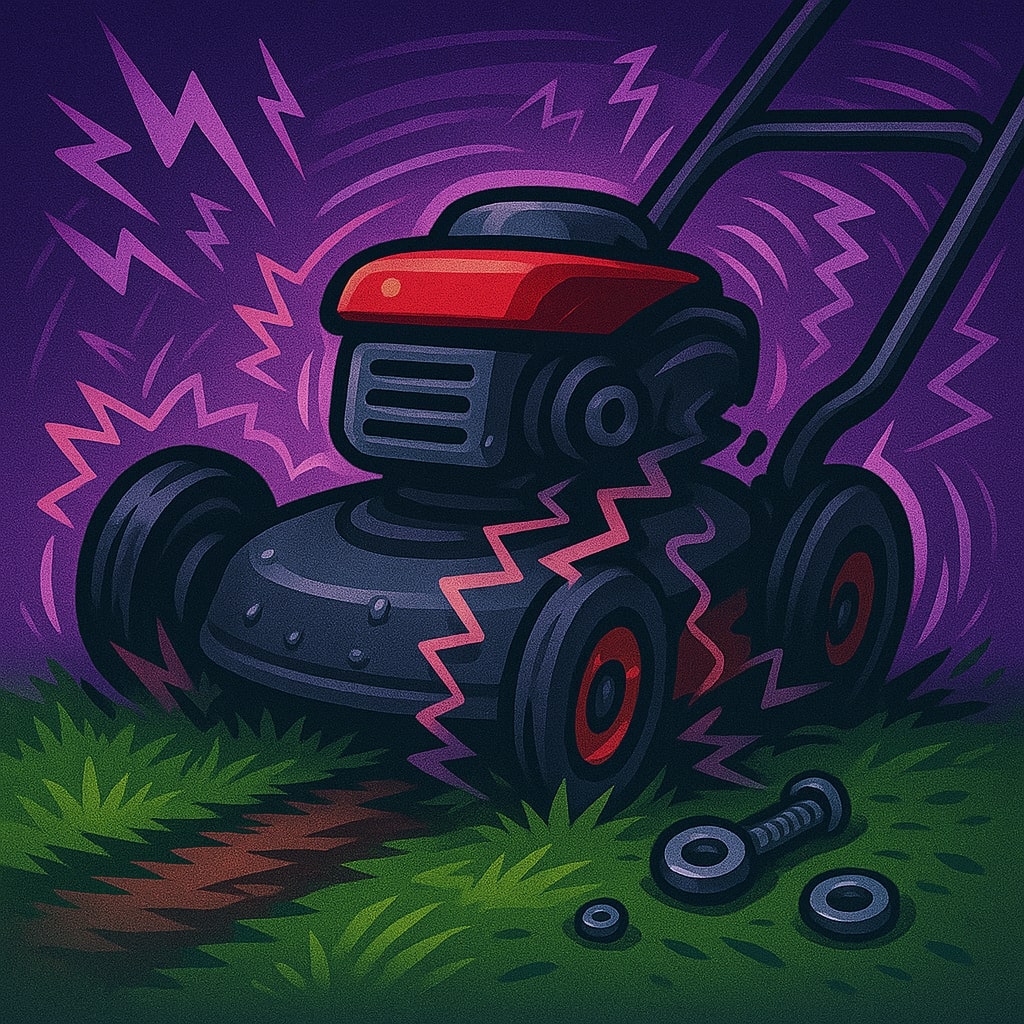
New rattles, grinding, or shaking are early warnings. Keep going and that “weird noise” can turn into a snapped blade, broken bracket, or worse.
If it suddenly sounds different, stop and inspect under the deck and around the blades before continuing.
16
Failing to Maintain Belts & Cables
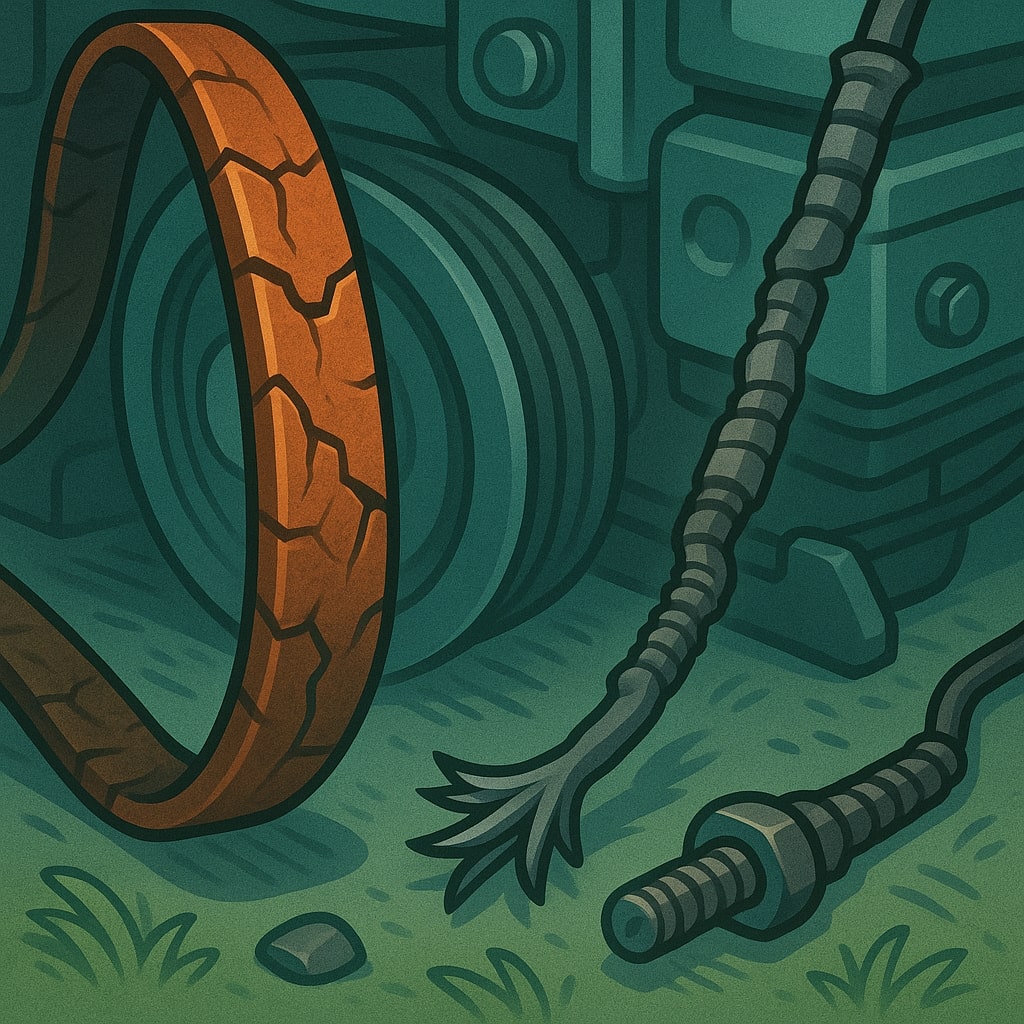
Cracked belts and sticky cables cause slipping, jerky drive, and sudden loss of blade power — always halfway through the yard, never at the garage.
If you see cracks, fraying, or glazing on belts, replace them before they snap mid-strip.
17
Using the Wrong Fuel Mix (2-Stroke Confusion)

Get the 2-stroke mix wrong and your mower smokes like a BBQ or runs dry on lubrication. Too much oil chokes it; too little oil cooks it.
Read the label once and mix in a marked container. 40:1 and 50:1 are not “close enough” to guess.
18
Storing the Mower Wrong After Use

Parking the mower under a tree, on wet ground, or out in the rain leads to rusted decks, seized cables, and flaky electrics. Long-term, bad storage kills more mowers than bad mowing.
Store it in a dry, covered spot. Let it cool, brush it off, and shut off the fuel if you’re done for a while.
0 of 18 completed
